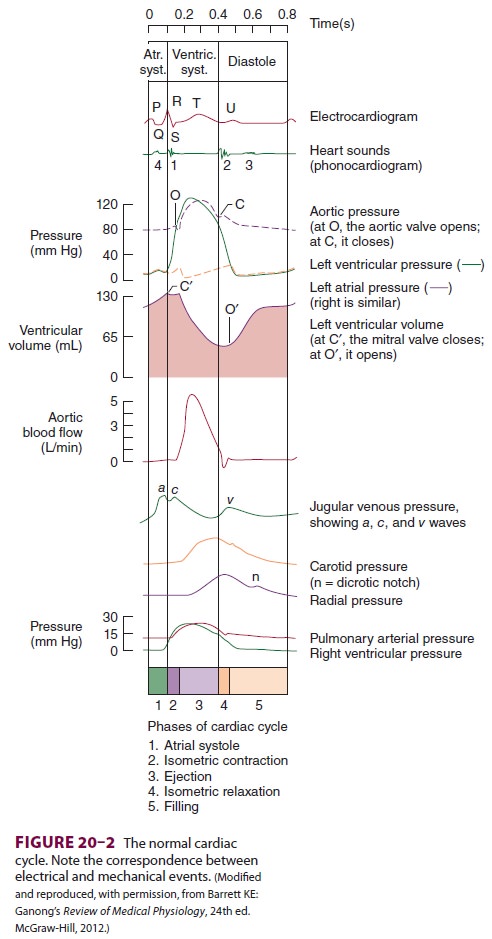Chapter: Clinical Anesthesiology: Anesthetic Management: Cardiovascular Physiology & Anesthesia
The Cardiac Cycle
THE CARDIAC CYCLE
The cardiac cycle can be defined by both
electrical and mechanical events ( Figure 20–2). Systole refers to contraction and diastole refers to relaxation. Most
diastolic ventricular filling occurs passively before atrial
contraction. Contraction of the atria normally contributes 20% to 30% of
ventricular filling. Threewaves can
generally be identified on atrial pres-sure tracings (Figure 20–2). Theawave is due to

atrial systole. The c wave coincides with ventricular contraction and is said to be
caused by bulging of the AV valve into the atrium. The v wave is the result of pressure buildup from venous return before
the AV valve opens again. The x
descent is the decline in pressure between the c and v waves and is
thought to be due to a pulling down of the atrium by ventricular contraction.
Incompetence of the AV valve on either side of the heart abolishes the x descent on that side, resulting in a
prominent cv wave. The y descent fol-lows the v wave and represents the decline in
atrial pressure as the AV valve opens. The notch in the aor-tic pressure
tracing is referred to as the incisura
and is said to represent the brief pressure change from transient backflow of
blood into the lef t ventricle just before aortic valve closure.
Related Topics